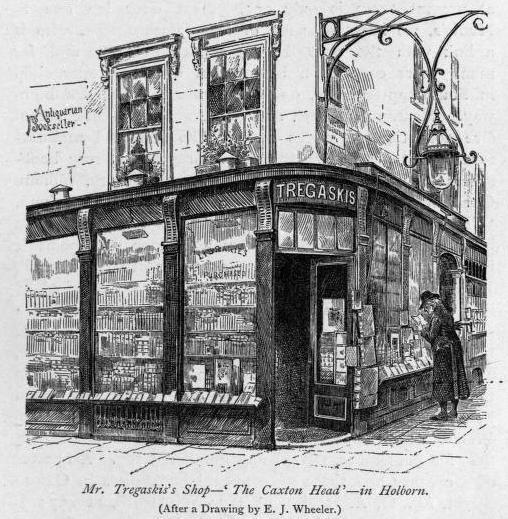ADLEE HESHMAT reviews an online discussion about the lost bookshops of Bloomsbury, which was part of the 2020 Bloomsbury Festival’s literary programme.
Beyond the stately Waterstones on Gower Street, and the quaint second-hand book store, Judd Books, many of the once-celebrated book shops in Bloomsbury have fallen out of the public domain. In an attempt to counter this, CULTIVATE MSS and the Institute of English Studies led an enlightening (virtual) walking tour ‘Looking for Bloomsbury’s Lost Bookshops’ on a grey mid-October afternoon.
Once introductions were made, no time was wasted, as the speakers began detailing the odyssey of books which could be found in the various bookshops of Bloomsbury. As we searched for ledgers and letters, we encountered a hodgepodge of long-defunct shops from the shell of Denham Books, to J&J Leighton, Caxton Catalogue, Tregaskis and Voynich. Most of these shops, named after their owners, prided themselves on their unique expertise, and for matching each rare book with a suitable buyer, delighting bibliophiles everywhere.
From Shakespeare’s early folios to medieval medical manuscripts, a bounty of books has passed through Bloomsbury’s bookstores. The business of trading books was so lucrative that even auction houses like Sotheby’s were noted for their literary arbitrage and extensive collections. These institutions spanned from Soho to Fleet Street through to Holborn and all the way up to Bloomsbury Square. Most book dealers operated only a short walk away from their fellow book-sellers and clientele alike. Cordial yet competitive, many booksellers and dealers helped each other out by maintaining cash flows across operations and providing the dry powder needed to finance the acquisition of very rare manuscripts. Sadly, in the early 20th century, this community gradually balkanized with many booksellers from across Bloomsbury moving to Charing Cross, where they still remain today.
For the booksellers that did remain like Messrs Tregaskis, which was formerly located on 232 High Holborn, tensions between residents and booksellers boiled over into the municipal history books. Extensive council records detailing complaints from local NIMBYs (Not In My Back Yard advocates) have been preserved. This conflict arose from the removal of Tregaskis’ pavement bookshelves, which had been in place to allow people to have a leisurely browse. Apparently, the concept of “having a browse” was already well-established back in the day.

The world of book dealing during Victorian England benefited from both a rising interest in the past and the increasing prominence of mass affluence. This naturally led to greed on the part of book dealers. Stories of book dealers committing fraud, financial manipulation and auction cartels were interwoven and juxtaposed with the more benevolent nature of books. The world of Bloomsbury’s ‘Lost Bookshops’ is a story of gritty, post-industrial London and emerging globalisation as book dealers flocked from the United States and all over Europe to make their mark.
I heartily recommend that you pay Maggs Bros Rare Books and Manuscripts – one of Bloomsbury’s oldest surviving book shops – a visit whenever circumstances allow. Maggs Bros, located in Bedford Square, has been selling books since 1853 and stands as a stoic monument for bookshops of yore.
Featured Image Source: unsplash.com





